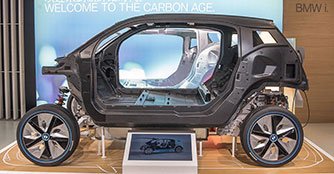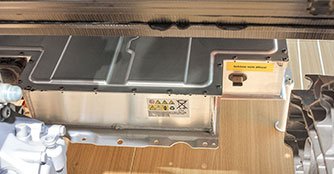Getting spectacularly innovative with BMW LifeDrive
12 Aug 2013|6,790 views
BMW LifeDrive isn't just the heart and soul of the BMW i3 - BMW's first zero-emission urban electric car. It's more than just that. LifeDrive a body-on-frame design that consists of two distinct separate components: the Life module, which is the passenger cell made of carbon and the aluminium Drive structure, which consists of the car's suspension, drive components and the high voltage battery. These two components, while they combine to form the complete vehicle, reveal more of their capabilities as individual elements.
BMW LifeDrive is the first architecture to be custom-built for electric cars and there are a couple of advantages for this said architecture.
Firstly, by securely housing all drive components in the Drive module, there is no tunnel running through the middle of the car, thus leaving more room for passengers. Secondly, the LifeDrive architecture not only compensates for the extra weight of the battery, it also lowers the car's centre of gravity, giving every BMW i the kind of agility you've grown to expect from BMW.
Passenger Cell
The Life module consists of Carbon Fibre Reinforced Plastic (CFRP), also called CFK or simply carbon. While its high strength offers passengers the best possible protection in the event of an accident, it's also light enough to offset the additional weight of the high voltage battery. In fact, it is around 50 percent lighter than steel and around 30 percent lighter than aluminium, allowing BMW i to set new standards in lightweight construction while also completely offsetting the additional weight resulting from the lithium-ion battery.
At the same time, carbon is a high-tensile material with very versatile applications in construction that increases the safety of all passengers. Not only does this results in a sense of generous spaciousness, there is also a reduction in weight, making it an even more dynamic vehicle to drive.
Drive Module
The lower module, which is a 100 percent aluminium construction, provides space for the high voltage battery, and also houses the suspension system, structural and crash components, and the electric drivetrain. It protects the battery from external influences, and deep central positioning of the components results in a low centre of gravity and optimal distribution - ensuring unparalleled agility and safety.
BMW LifeDrive isn't just the heart and soul of the BMW i3 - BMW's first zero-emission urban electric car. It's more than just that. LifeDrive a body-on-frame design that consists of two distinct separate components: the Life module, which is the passenger cell made of carbon and the aluminium Drive structure, which consists of the car's suspension, drive components and the high voltage battery. These two components, while they combine to form the complete vehicle, reveal more of their capabilities as individual elements.
BMW LifeDrive is the first architecture to be custom-built for electric cars and there are a couple of advantages for this said architecture.
Firstly, by securely housing all drive components in the Drive module, there is no tunnel running through the middle of the car, thus leaving more room for passengers. Secondly, the LifeDrive architecture not only compensates for the extra weight of the battery, it also lowers the car's centre of gravity, giving every BMW i the kind of agility you've grown to expect from BMW.
Passenger Cell
The Life module consists of Carbon Fibre Reinforced Plastic (CFRP), also called CFK or simply carbon. While its high strength offers passengers the best possible protection in the event of an accident, it's also light enough to offset the additional weight of the high voltage battery. In fact, it is around 50 percent lighter than steel and around 30 percent lighter than aluminium, allowing BMW i to set new standards in lightweight construction while also completely offsetting the additional weight resulting from the lithium-ion battery.
At the same time, carbon is a high-tensile material with very versatile applications in construction that increases the safety of all passengers. Not only does this results in a sense of generous spaciousness, there is also a reduction in weight, making it an even more dynamic vehicle to drive.
Drive Module
The lower module, which is a 100 percent aluminium construction, provides space for the high voltage battery, and also houses the suspension system, structural and crash components, and the electric drivetrain. It protects the battery from external influences, and deep central positioning of the components results in a low centre of gravity and optimal distribution - ensuring unparalleled agility and safety.
Latest COE Prices
November 2025 | 2nd BIDDING
NEXT TENDER: 03 Dec 2025
CAT A$109,000
CAT B$129,890
CAT C$76,389
CAT E$125,001
View Full Results Thank You For Your Subscription.




























